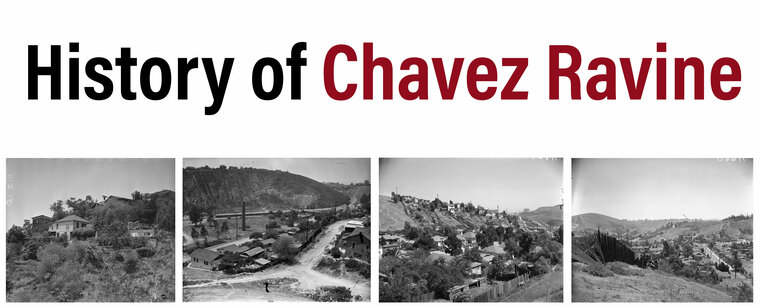
By 1951, Chavez Ravine was slated for redevelopment under the National Housing Act of 1949, which provided federal money to build public housing. The Los Angeles Housing Authority began acquiring the land of Chavez Ravine in 1951 through both voluntary purchases and the exercise of eminent domain. In furtherance of the public housing proposal, the city acquired almost all of the land of Chavez Ravine and razed nearly the entire community over the period from 1952 to 1953. The planned public housing development was entitled "Elysian Park Heights" and was designed by Austrian architect Richard J. Neutra. Planned on 54 acres, the development included 24 thirteen-story towers and 163 low-rises providing nearly 3,600 new low-cost apartments. Social critics of the era have argued that the urban renewal efforts of the 1950s under the National Housing Act often included significant and even dominant elements of racial and ethnic oppression, sometimes reflected in the dispossession of minority landowners in "renewed" areas. Residents were encouraged to sell property through a tiered buy-out scheme that offered increasingly lower amounts to sellers who stalled, exploiting their fear of losing out on the maximum payment. In reality, the prices paid were well below market value. Those who held out were ultimately forcefully removed in 1959 by Los Angeles County Sheriffs.
In 1953 Norris Poulson, a political conservative, was elected mayor of Los Angeles on a platform that included opposition to construction of all new public housing projects. In addition, a public referendum was then passed barring all public housing in Los Angeles. Poulson's election and the referendum resulted in the termination of the "Elysian Park Heights" development. The City also agreed with the federal government to abandon the public housing project with the stipulation that the by then nearly-vacant land be used for a "public purpose."
For years the nearly vacant Chavez Ravine land lay unused but for a tiny number of remaining original residents, and the land was offered by the city to various potential developers without success. Eventually, in the late 1950s, the city proposed to Brooklyn Dodgers owner Walter O'Malley that an entirely separate plot of land (a plot not part of or close to Chavez Ravine) be used as the site of a baseball stadium for the Dodgers team, which was exploring a move from Brooklyn's Ebbets Field to Los Angeles. O'Malley declined the original offer, but expressed an interest in Chavez Ravine, which he had seen from the air.
As of September 1957, prior to O’Malley's decision to move west, the territory of Chavez Ravine was still reserved for “public purposes.” On these grounds, the proposal that Chavez Ravine be used for a baseball stadium received considerable backlash. Many did not believe that a professional baseball team was a "public use" required by the Constitution as a limit on the use of eminent domain. Some Los Angeles officials argued that the area should be used to establish a zoo, citing that a zoo would provide “public recreation” to the city. In 1957, the Los Angeles City Council approved the transfer of the land to the Dodgers. This process was halted by a successful petition that established the need for a public vote to decide whether or not the Dodgers could obtain the land. The referendum to stop the land transfer, in June 1958, failed by 25,000 out of 677,000 votes. The city ended up conveying the Chavez Ravine site to the Dodgers for small consideration. Dodger Stadium was then constructed with private funds and remains privately owned.
There was significant resistance to the eviction by the residents. After nearly 10 years, by 1959 Manuel and Abrana Arechiga (often cited as "Avrana"), with their daughter Aurora Vargas (a war widow, later surnamed Fernandez), were among the last of the tiny number of residents to hold out against the government land acquisition effort undertaken for the original public housing project. Forced removal by the Los Angeles County Sheriff's Department (LASD) on May 9, 1959, resulted in Vargas' arrest. Vargas was fined and briefly sent to jail for her resistance. Manuel Arechiga was the final holdout, living in a tent on the site of his demolished home for months. Public sympathy for the Arechigas quickly waned, however, when subsequent news reports indicated that the Arechigas owned twelve rental houses elsewhere in Los Angeles. This was, however, a false representation, as it was cousins, relatives, and children who owned these houses. Arechiga eventually relented and accepted the city's offer of $10,500. But the California Court of Appeal denied them interest on their award, to which they were entitled under the Constitution




